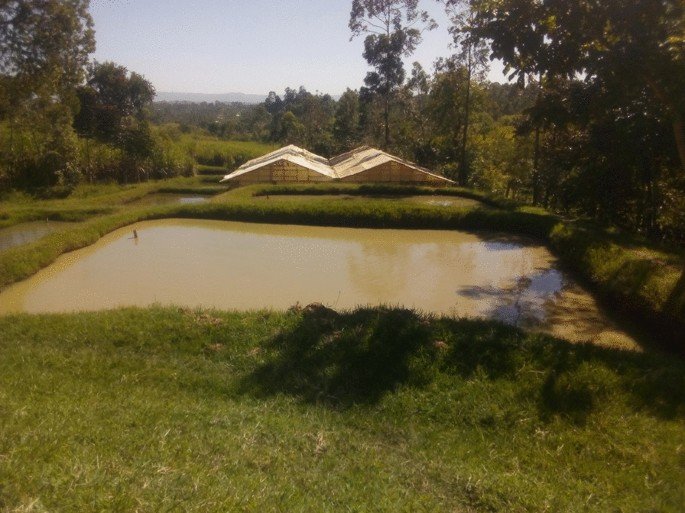Understanding Biosecurity in Fish Farming
Biosecurity in fish farming refers to the set of management practices designed to prevent the introduction and spread of harmful pathogens and pests that can affect fish health. Fundamentally, biosecurity serves as a proactive approach to safeguard aquatic life, preserving not only the health of individual fish but the entire population within a farming system. This concept is integral to maintaining the viability and sustainability of aquaculture operations, particularly as fish farming grows in scale and intensity globally.
The role of biosecurity in fish farming cannot be overstated. Disease outbreaks can have devastating consequences, ranging from increased mortality rates among fish to severe economic losses for farmers. By implementing effective biosecurity measures, farmers can significantly reduce the risk of infections. These may include protocols such as controlling access to fish farms, maintaining clean equipment, and monitoring water quality. Regular health assessments of the fish populations can also provide early warnings of potential issues, allowing for timely interventions.
Neglecting biosecurity measures can have far-reaching implications. Poor fish welfare resulting from unchecked disease can lead to high mortality rates and compromised growth, undermining the productivity of the fish farming operation. Economically, the costs associated with disease management, loss of stock, and potential penalties from regulatory bodies can be substantial. Additionally, disease outbreaks can contribute to reputational damage within the market, limiting future sales opportunities. Thus, understanding and implementing comprehensive biosecurity protocols is not only a matter of ethical responsibility towards aquatic life but also essential for the long-term economic sustainability of fish farming enterprises.
Key Biosecurity Measures in Fish Farms
In the realm of fish farming, implementing effective biosecurity measures is paramount to ensuring the health and sustainability of aquatic populations. Numerous strategies exist, but the following four measures are particularly critical: site selection, pond management, water quality control, and fish health monitoring.
Firstly, site selection is vital for establishing a fish farm. Ideally, a site should be situated away from potential sources of contamination such as agricultural runoff, industrial discharges, or proximity to other fish farms. Conducting a thorough environmental assessment can aid in identifying optimal locations that minimize risks significantly.
Pond management emerges as the next crucial measure. Regularly cleaning ponds and maintaining optimal stocking densities prevents overcrowding, which can lead to stress and elevate susceptibility to diseases. Additionally, having proper drainage systems facilitates effective waste management, thus contributing to a healthier environment for the fish. Ensuring proper fencing around the farm can also limit the risk of wild animal intrusion, which can introduce pathogens.

Water quality control is another essential biosecurity measure that cannot be overlooked. Regular monitoring of temperature, pH levels, dissolved oxygen, and other water parameters enables fish farmers to identify potential issues before they escalate. Implementing filtration systems, aeration, and water treatment protocols can help maintain high water quality, reducing stress on fish and lowering the likelihood of disease outbreaks.
Lastly, establishing a robust fish health monitoring program is critical. Regular health examinations and vaccination when necessary help in early detection of diseases. Keeping detailed health records allows farmers to identify trends and address specific issues promptly, thereby enhancing overall fish welfare. Through these measures, fish farmers can significantly reduce the risk of disease and create a thriving aquaculture environment.
Handling and Transport Protocols
Effective handling and transport of fish are crucial elements in maintaining biosecurity within aquaculture operations. To minimize stress and reduce the risk of exposure to pathogens, aquaculture professionals should adhere to best practices during the movement of fish. This begins with the preparation phase, where appropriate equipment must be selected. Aerated tanks, well-insulated containers, or specialized transport vehicles are essential for ensuring that fish remain in optimal conditions during transit.
Sanitation procedures should be strictly implemented before, during, and after transport. This includes cleaning and disinfecting all equipment and containers used in the handling process. The use of dedicated tools for fish handling, which are cleaned regularly, can significantly reduce the risk of disease transmission. Staff should be trained to recognize and implement sanitation protocols effectively to combat potential pathogen introduction. A checklist of sanitary practices should be enforced, including the use of foot baths and hand sanitizers as part of the entry and exit protocols for all personnel involved.
Equally important is the emotional well-being of the fish, as stress can compromise their immune systems and make them more susceptible to diseases. It is, therefore, essential to handle fish gently and efficiently, minimizing the time they spend out of water. Furthermore, transporting fish during cooler times of the day can help reduce thermal stress, particularly during warmer months. Careful monitoring of environmental conditions inside containers should be standard practice, such as controlling the temperature, oxygen levels, and ammonia concentrations, which are critical for maintaining fish health.
Staff training on biosecurity protocols is essential, ensuring that everyone involved in handling and transport understands the procedures and the critical role they play in disease prevention. A culture of shared responsibility for biosecurity can contribute significantly to the overall health and productivity of fish farming operations.
Monitoring and Continuous Improvement of Biosecurity Practices
The effectiveness of biosecurity measures in fish farming largely depends on ongoing monitoring and reassessment. Establishing a robust monitoring system is crucial for tracking the effectiveness of implemented protocols. This involves regular data collection on fish health, water quality, and the overall environment of the farming operation. By conducting routine evaluations, fish farmers can quickly identify potential biosecurity breaches and take proactive measures to mitigate risks. Tools such as checklists, logs, and reporting systems can streamline this process, ensuring all relevant aspects are scrutinized systematically.
Moreover, the role of research in enhancing biosecurity practices cannot be understated. As diseases evolve and new threats emerge, staying updated on scientific advancements and technological innovations is essential for fish farmers. Engaging with academic institutions and industry experts facilitates access to the latest findings and best practices. Regular participation in workshops, conferences, and training sessions can empower fish farming professionals to adapt their biosecurity measures, maintaining a resilient system against pathogens and contaminants.
Case studies of successful biosecurity implementation serve as invaluable resources for the industry. By analyzing specific examples where rigorous biosecurity protocols led to the prevention of disease outbreaks, farmers can visualize concrete outcomes resulting from their practices. Detailed examinations of farms that have demonstrated exemplary biosecurity measures can also serve to inspire a culture of continuous improvement. Such a mindset encourages farmers to remain vigilant, adjust strategies as necessary, and ultimately elevate the standards of fish farming operations.
In conclusion, the importance of ongoing monitoring and continuous improvement of biosecurity measures cannot be overstated. By utilizing effective tracking methods, fostering collaboration with experts, and learning from successful case studies, fish farmers can create a robust framework. This proactive approach ensures a sustainable and healthy environment for fish, ultimately benefiting the entire aquaculture industry.




